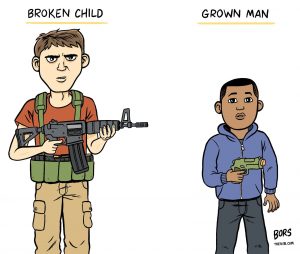In the chapter titled “Legitimate Trade, Democracy, and the Slave Trade”, author M. Alpha Bah informs readers on the political and social factors of Africa which in some ways aided internal slavery, which later aided the Trans-Atlantic Slave Trade.
After reading this section, I’ve been left with a few questions. If Portuguese natives, lancados, found the beauty in African culture, enough to settle along its’ coast, marry its women and adopt its customs, why couldn’t all Europeans acknowledge and respect the beauty of Africa? I am also curious as to the baptism of the African slaves upon their entrance into the New World. Why would the Catholic Church demand that European slave traders baptize them? If Africans were deemed ‘inhumane’ enough to be forced into bondage, why should the ‘guarantee of their salvations’ even matter? Did this signify European guilt of their exploitation of human beings?

Recent Comments